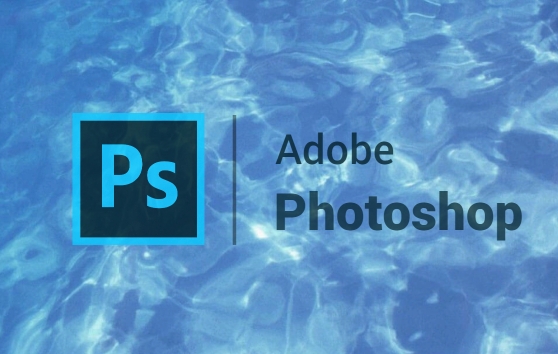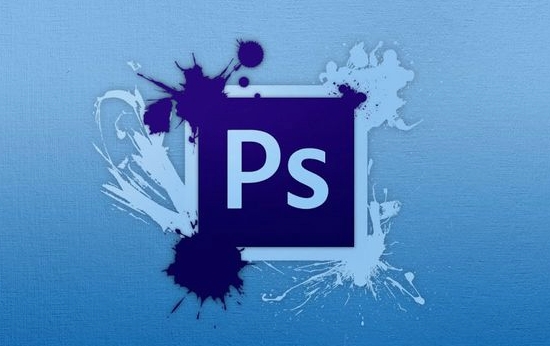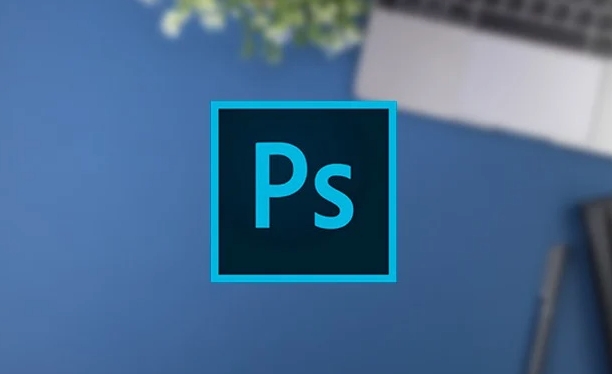How to create a reflection in water in Photoshop
To create a real water surface reflection effect in Photoshop, you need to follow the following steps: 1. Prepare an image with a clean background and prominent subject, and leave water surface space; 2. Convert the subject layer into a smart object and flip vertically, adjust the position and height as reflection; 3. Use the "Ripple" or "Marine Ripples" filter to simulate water surface fluctuations, and control the effect intensity through masks; 4. Perform Gaussian blurring or dynamic blurring on the reflection, appropriately reduce saturation and brightness, and use a gradient mask to enhance the sense of reality. The entire process requires attention to details such as angle, light and dark changes and blurring to improve the authenticity of the final effect.

It is actually not difficult to create a surface reflection effect in Photoshop. The key is to simulate the real reflection form and the impact of water on objects, rather than simply copying and pasting it.

1. Prepare the original image
First of all, you need to have a clear subject image, preferably a picture with a clean background and a prominent subject. For example, a picture of a building or a person standing by the water. If you synthesize it yourself, it is recommended to leave a certain space below the main body to facilitate subsequent addition of reflections.

- Don't be too complicated, otherwise the reflection part will be very difficult to process.
- If it is synthesised after cutting the picture, remember to clean the edges
- Try to level the water surface area so that the reflection will be natural
2. Create the basic shape of the reflection
Select the layer you want to add reflection, right-click and select "Convert to Smart Object", and then press Ctrl T (Cmd T on Mac) to enter the free transformation mode. Right-click to select "Flip Vertical", then drag the flipped image below the main body as a reflection.
- The reflection should be aligned with the bottom edge of the body
- It may need to reduce the height a little bit after flipping, as the reflection is usually slightly shorter in reality than it is
- The reflection color may be darker, you can try lowering the transparency first
3. Add water surface ripple effect
This step is the key to making the reflection look more realistic. You can use the "ripples" or "marine ripple" in the filter to simulate water surface fluctuations.

- Find Filters > Twisting > Ripples and choose medium quantity and size
- If you are using smart objects, you can add a mask after applying the filter to ensure that the local control effect is strong and weak
- Don't be too exaggerated, a slight ripples are enough
4. Adjust color and blur
The reflection in reality will not be completely clear, so it should be handled with Gaussian blur or dynamic blur.
- Copy the reflection layer, add Gaussian blur to the upper layer, and retain clear outlines of the lower layer
- It can appropriately reduce saturation and brightness, making the reflection look more realistic
- Use a gradient mask to make the reflection blurry the more you go down, imitating the real water surface reflection effect
Basically there are just a few steps. It doesn't seem complicated to say, but it's easy to ignore the details, such as the angle of reflection, changes in light and darkness, and degree of blur. Try it a few more times and you will feel more and more.
The above is the detailed content of How to create a reflection in water in Photoshop. For more information, please follow other related articles on the PHP Chinese website!

Hot AI Tools

Undress AI Tool
Undress images for free

Undresser.AI Undress
AI-powered app for creating realistic nude photos

AI Clothes Remover
Online AI tool for removing clothes from photos.

Clothoff.io
AI clothes remover

Video Face Swap
Swap faces in any video effortlessly with our completely free AI face swap tool!

Hot Article

Hot Tools

Notepad++7.3.1
Easy-to-use and free code editor

SublimeText3 Chinese version
Chinese version, very easy to use

Zend Studio 13.0.1
Powerful PHP integrated development environment

Dreamweaver CS6
Visual web development tools

SublimeText3 Mac version
God-level code editing software (SublimeText3)
 How to restore an old photograph in Photoshop
Jul 12, 2025 am 12:40 AM
How to restore an old photograph in Photoshop
Jul 12, 2025 am 12:40 AM
Repairing old photos can be achieved through key steps in Photoshop. The first is scanning and preliminary adjustment, including high-resolution scanning, cropping images, rotation correction and brightness/contrast adjustment; the second is to remove scratches and stains, use the imitation stamp tool to deal with large-area damage, repair tools to deal with small scratches, and pay attention to low transparency overlay and layering operations; the third is optional coloring and color tuning, and use the "hue/saturation" adjustment layer to increase retro tone; the last is to polish and output, check details, adjust sharpness, confirm resolution and select a suitable format to save. The entire process requires patience and meticulousness, especially when dealing with key parts such as the facial features of the characters.
 What are the key differences between Layer Masks and Vector Masks, and when should each be used?
Jul 16, 2025 am 12:03 AM
What are the key differences between Layer Masks and Vector Masks, and when should each be used?
Jul 16, 2025 am 12:03 AM
LayerMasks and VectorMasks are used in Photoshop with similar uses but different principles. LayerMasks is based on pixels and uses grayscale values to control the display and hiding of layer areas. It is suitable for photo detail editing, soft transition effects and fine brush adjustments, but zooming in may lead to jagging; VectorMasks is based on vector paths and shapes, and has resolution irrelevant resolution. It is suitable for graphics that require clear edges such as logos, icons or text frames, and can be scaled losslessly; the selection is based on the content type (photo or graphics), whether the size needs to be greatly adjusted, and the required edge effects (soft or sharp), and sometimes combined use can give full play to their respective advantages.
 How can vector shapes be created and manipulated in Photoshop?
Jul 14, 2025 am 12:01 AM
How can vector shapes be created and manipulated in Photoshop?
Jul 14, 2025 am 12:01 AM
TocreateandmanipulatevectorshapesinPhotoshop,usetheShapeToolstodrawvectorpathsonshapelayers,editanchorpointswiththeDirectSelectionTool,combineorsubtractshapesusingpathoperations,andrasterizewhennecessary.First,selectthedesiredshapetool—Rectangle,Elli
 What are artboards in Photoshop
Jul 14, 2025 am 12:04 AM
What are artboards in Photoshop
Jul 14, 2025 am 12:04 AM
AnartboardinPhotoshopisamovable,resizablecontainerthatactsasanindividualcanvaswithinasingledocument.Itallowsdesignerstocreatemultiplelayoutsordesignvariationssidebyside,eachwithitsownsizeandcontent.Artboardsareidealforweblayouts,appscreens,banners,an
 How to select a specific color range in Photoshop
Jul 12, 2025 am 12:37 AM
How to select a specific color range in Photoshop
Jul 12, 2025 am 12:37 AM
ToselectaspecificcolorrangeinPhotoshop,usetheColorRangetool.1.GotoSelect>ColorRangeandclicktheeyedropperonthedesiredcolor.2.AdjusttheFuzzinessslidertocontrolselectionbreadth.3.AddmoresampleswithShift-clicks.4.EnableLocalizedColorClustersforcomplex
 What is the purpose of guides, grids, and rulers in achieving precise layouts?
Jul 15, 2025 am 12:38 AM
What is the purpose of guides, grids, and rulers in achieving precise layouts?
Jul 15, 2025 am 12:38 AM
Rulers provide positioning references, Guides implement element alignment, and Grids builds a systematic layout. 1. Rulers display position coordinates, and can drag out reference lines to check element deviations and judge distance specifications; 2. Guides are virtual lines dragged out from rulers, accurately align elements and divide areas, and support locking and color settings; 3. Grids consists of rows and columns to control the overall layout rhythm, and adapt to responsive design, which are common, such as 12-column web page grids and 8px mobile grids. The combination of the three improves layout efficiency and professionalism.
 How to edit product photos for e-commerce in Photoshop
Jul 11, 2025 am 12:16 AM
How to edit product photos for e-commerce in Photoshop
Jul 11, 2025 am 12:16 AM
Cropping and straightening ensure consistency, 2. Remove defects and improve texture, 3. Adjust brightness contrast and color balance to optimize light, 4. Adjust size and format for easy uploading. When editing e-commerce product photos, you need to keep it simple and consistent. First, use the cropping tool and enable the "Content Recognition" option to fill the edges, and use the straightening tool to level the product; then use the repair brush or cloning stamp tool to remove detailed defects such as dust and scratches; then optimize brightness, contrast and color balance by adjusting the layer to avoid oversaturation; finally set the image size to 1600-2000 pixels, select JPEG or PNG format to save and retain the original file backup.
 How does Photoshop's 'Generative Fill' (new AI feature) change the approach to image editing and creation?
Jul 24, 2025 am 01:41 AM
How does Photoshop's 'Generative Fill' (new AI feature) change the approach to image editing and creation?
Jul 24, 2025 am 01:41 AM
Photoshop's "general fill" function has revolutionized image editing and creation through Adobe Firefly and AI technologies, which not only improves speed but also enhances creative flexibility. 1. The background replacement is transformed from a time-consuming manual cloning to an input prompt to generate a natural background matching light, perspective and style; 2. In concept design, users can quickly generate elements such as shelves or plants to build a scene and significantly shorten the early conception time; 3. In terms of image modification, only accurate prompts can be used to achieve complex operations such as removing objects and continuing textures, but the quality of the result depends on the accuracy of prompts; 4. The focus of skills has shifted from traditional tools to effective prompt word writing to make AI collaboration a new core skill. This feature is not a replacement for the original tool but is effective







